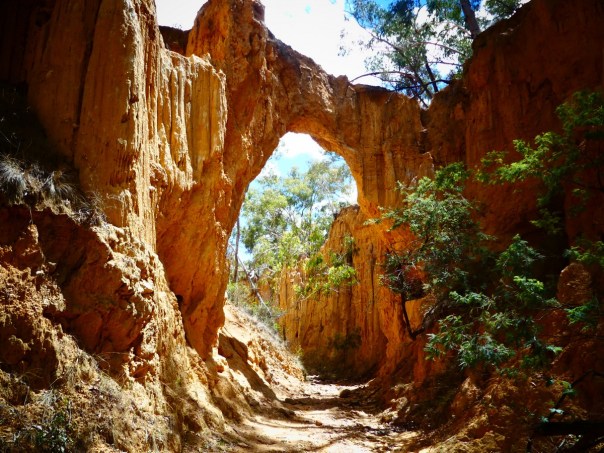Ons bezoek aan Australië zit er bijna op, en het is tijd om nog enkele impressies en reflecties weer te geven.
We hebben veel beestjes gezien, heel veel. In vergelijking met NZ ongeloofelijk veel. Het leuke is dat ze meestal geen schrik hebben van mensen, en speciaal op de campings. Hier volgen twee voorbeelden:
’s Morgens en ’s avonds geven ze van katoen, in concurrentie met de lachende kookaburra. (Ik laat de eer aan Ilse om een videooke en een foto van deze laatste te tonen)
Op ons allereerste wandeling in Australie ( in de tuin van het Heide museum in Melbourne ) zagen we onze eerste witte Kockatoos, en we dachten dat ze ontsnapt waren uit een kooi. Toen wisten we nog niet dat er ons nog duizenden vogels zouden verassen met hun verschijning en gezang. Heerlijk.
Helaas heeft deze blauw getongde hagedis hierboven zijn bek niet open gedaan, want dan zag hij er zo uit:


Onze Skippy – de campervan – heeft ons goed geholpen. We hebben hem in die 64 dagen en 7500km goed leren kennen en als we zo eens rond ons keken op campings naar de alternatieven, dan zijn we best tevreden met onze keus. Hier zijn enkele momentopnames:


We hebben een schaapscheerder bezig gezien in Hay. Het record is 38 seconden, maar dit was meer om te tonen hoe het gaat:
Een australisch stekelvarken: de echidna (spreek uit ee-kied-na)
Australië is een droom voor museum bezoekers: er zijn er veel, ze zijn van zeer hoge kwaliteit en ze zijn meestal gratis (donaties worden geapprecieerd). Van alle steden is Canberra – de hoofdstad – hier wel de koploper. We hebben er drie dagen binnen gezeten in de verschillende musea:



Nog enkele losse flitsen


In Australië (en Nieuw Zeeland en Amerika) kan je niet de weg op zonder engels te kennen. De wegwijzers zijn heel verbaal en gebruiken soms woorden die niet direct intuitief zijn voor toeristen. (Vb: CREST, Gravel Road, …)
In Europa zou het dit zijn: 
En zo zijn er nog honderden andere voorbeelden, werkelijk!
Nog iets raars: we waren op een zeer smalle en bochtige bergweg, en in het begin stond er een bord met de tekst dat de weg sterk afgeraden werd voor wagens met een aanhangwagen. Er stond niet dat je er niet op mocht, het werd sterk afgeraden. En inderdaad, ik weet niet of je er met een caravan op zou geraakt zijn. Ik vraag me af wat er gebeurt als er een auto met caravan de weg blokkeert. Boete of sterke vermaning?
Begrijp me niet verkeerd: ik vond het heel aangenaam rijden in Australië, en dat links rijden zit er nu wel goed in. Het zal raar doen om terug rechts te rijden…
And a last one for the road:





































